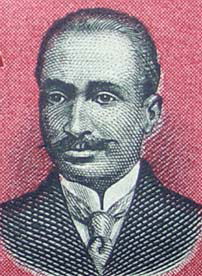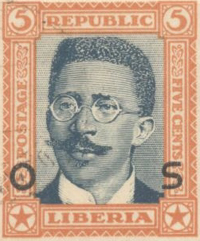|
|
The Firestone loan: Sovereignty impaired | |
|
|
|
|
|
President Howard signed a
Loan Agreement in 1917 with the Bank for British West Africa, the only
bank in the country. Thus an amount of US $ 100,000 was obtained. But even
the new loan did not improve the financial situation of the government.
For a second time contacted for a loan, the British Bank introduced
several conditions which were unacceptable to the Liberian Government.
Among others, it demanded the appointment of Bank officials to Government
positions. Shortly thereafter, President Howard was successful in securing
a commitment of the U.S. Government for a US $ 5 million loan.
In 1920 a Liberian mission which included the country's new President,
Charles King agreed with the U.S. Government to place the control over
Liberia's expenditures and native affairs in the hands of 13 Americans.
The Frontier Force would also be placed under U.S. control. In 1921 the
number of Americans was increased from 13 to 22. The Liberian Legislature
ratified the Agreement in 1922 although many protests were heard against
these conditions. However, later the U.S. Senate refused to ratify the
Loan Agreement, thereby paving the way for Firestone to enter Liberia.
|
 President Howard
1) In April 1925 the French Colonial army seized 10 Liberian villages and added the Zinta sector to its West African Colonies. |
|
|
When Harvey Firestone, supported by U.S. Government officials, showed interest in establishing a rubber plantation in Liberia, President King was very enthusiastic and, after some years of negotiations, Firestone was granted its famous concession. However, the nature of the Firestone investment made it imperative for the rubber company to have some political control over the Liberian Government. Firestone wanted to avoid his investments being endagered by European powers that sought to expand their colonial empires. Therefor, Firestone insisted that Liberia should take a loan from him which would be used to repay the European creditors, thus eliminating a situation that could become a pretext for European governments to interfere in Liberian affairs1). |
||
|
This explains why the
1926 Planting Agreement was tied to a US $ 5 million Loan Agreement
through which Liberia lost complete control over its Public Finance and
part of its national sovereignty. The $ 5 million Loan put Liberia virtually under control of US administrators and supervisors. An American Financial Advisor appointed by the US Government controlled the Republic’s finance and had to approve the country’s budget every year. But the most striking and important consequence of this Loan was that the Liberian Government was now forbidden to contract new loans without the written consent of the Finance Corporation of America, i.e. Firestone.
Its Public Debt which stood at some US $ 2 million during the negotiations and which for almost 90% carried an interest rate of 5% (or less) per year was thus replaced by a 7% US $ 5 million loan with a maturity (loan term) of 40 years. It could be said that with the arrival of Firestone in Liberia this country had (finally) become a U.S. Protectorate - not under the political umbrella of the U.S. Government but under the financial umbrella of a private U.S. company. |
||
|
Source: Fred P.M. van der Kraaij, ‘The Open Door Policy of Liberia – An
Economic History of Modern Liberia’ (Bremen, 1983; pp. 39 -40). References and recommended reading:
|
||
| © fpm van der kraaij |
